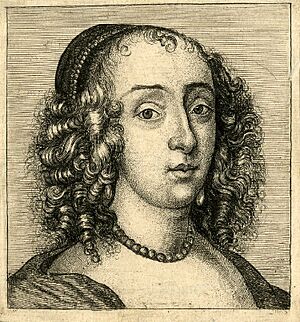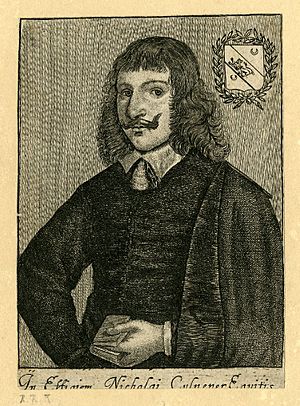Richard Gaywood facts for kids
Richard Gaywood (active between 1650 and 1680) was an English artist who specialized in making engravings. An engraver creates pictures by cutting designs into metal plates, which are then used to print images onto paper. Gaywood was known for his detailed portraits and illustrations for books.
Contents
About Richard Gaywood
Richard Gaywood learned his art from a famous engraver named Wenceslaus Hollar. Gaywood worked in a similar style to his teacher. He was also good friends with another artist, Francis Barlow, and often engraved Barlow's designs.
What He Created
Gaywood was a very busy artist. Most of his work included portraits of people and special title pages for books. Publishers often hired him for these jobs. He did a lot of work for a publisher named Peter Stent.
Engravings of Animals and People
Gaywood is especially known for his etchings of birds and animals, which he often made after drawings by Francis Barlow. They even worked together on a large etching based on a painting by the famous artist Titian. This particular etching was given to John Evelyn, a well-known writer and diarist.
Gaywood's portraits included copies of works by Hollar and Anthony van Dyck. He also created original portraits of many important people of his time. Some of these included:
- William Drummond of Hawthornden, a Scottish poet.
- Oliver Cromwell, a powerful leader in England.
- James Shirley, a playwright.
- Sir Peter and Lady Ellinor Temple.
- George Monck, Duke of Albemarle, a general (after a design by Barlow).
- Madame Anne Kirk.
- General William Fairfax.
- Sir Bulstrode Whitelocke, a lawyer and politician.
- John Browne, who made scientific instruments.
Other Interesting Works
Besides portraits, Gaywood also created many frontispieces and title pages for books. One example is the title page for Johann Jacob Wecker's Secrets of Art and Nature (1660).
He also made other interesting prints, such as:
- A series of pictures showing social scenes, called the Five Senses.
- A view of Stonehenge, the ancient stone monument.
- A print showing The most magnificent Riding of Charles the II to the Parliament, 1661, which showed King Charles II's grand procession.
- A satirical (funny and critical) print from 1673 called The Egg of Dutch Rebellion.
- A picture showing the Capture of a Whale at Sea.
- Prints of the ancient Greek philosophers Democritus and Heraclitus.



